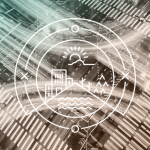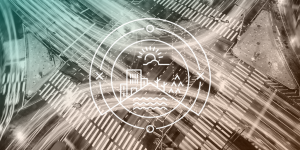Service Catalogue maps more than 70 Space data-related services in Baltic Sea region
Copernicus data is easily available, and there is a large number of service providers and developers that can help you with actionable information. The BalticSatApps Service Catalogue showcases the strength and width of the service providers and developers in the Baltic Sea region. The catalogue covers Estonia, Finland, Poland, Russia, and Sweden.

Background
The service mapping is based on the wider European needs to accelerate innovation, transforming the knowledge generated to underpin and enhance existing products, services and markets, and to create new ones while maintaining focus on quality and sustainability. Innovative downstream services and applications using space derived information represent an important source of growth and job creation in the European Union. (Horizon 2020: INDUSTRIAL LEADERSHIP).
In the initial phase, it was recognised that there were already some downstream services available in the BalticSatApps partner countries, such as snow, ice, agricultural monitoring, and phenology. The idea was to collect and list all available services in a combined catalogue, and make them visible. The catalogue was also planned to include downstream services with business ideas to facilitate innovations in the sector.
The mapping was coordinated by the Swedish National Space Agency (SNSA). The Head of Innovation and Public Benefit in the SNSA, Tobias Edman tells that the partners in the BalticSatApps project reached out to service providers from their countries, and asked them to provide information on services based on Copernicus data or Services that they make available:
“In the project we have had several activities, such as info and training sessions, hackathons and start-up activities, all aiming at raising awareness and create contacts with and between different organisations. As the project has been going on for nearly three years, there were many companies in the BalticSatApps network to reach out to and many answers to handle.”
What does catalogue contain – what one can do with it?
In brief, the catalogue includes information about how the data was collected, information about business opportunities recognised, and more than 70 listed services from the Baltic Sea region within 15 categories, from agricultural analysis to data portals. Readers can get an overview about:
- Where EO data has been deployed and for what kind of problems,
- Detailed features of services that can help developers assess market situation, and differentiate their own services.
The catalogue is first and foremost targeted to startups, entrepreneurship communities, science and technology parks, and innovation actors, but can be utilised naturally also by other stakeholders. The included services are both open and freely available services from governmental bodies in the Baltic Sea region as well as commercial services from service providers in the respective countries. The service providers range from governmental bodies and well-established companies to start-ups benefiting from the freely available Copernicus data and services.
When asked to reflect the discovered business opportunities and service areas, and to give some examples how to use the catalogue, Tobias Edman presents the follows:
“If you are interested in data for better forest management, the catalogue will provide a number of services and contact points. This can be used to get access to the information that fits your needs the best.
Or if you are a start-up with a brilliant idea, the catalogue will give an overview of the competition, but also contact information to future collaborators. It´s actually both mapping the services that are out there, but also those that are missing.”
Discovered business opportunities – smart cities and recreation

Smart cities: With the current boost of city monitoring systems, the integration of geographical information systems (GIS) and building information modelling (BIM), as well as the rapid development of smart city concepts, there should be an expanding market for tools integrating Copernicus data into city planning and management systems. This can imply, for example, creating improved models over nitrogen dioxide levels, analyses of city greenness, water quality for baths and freshwater intakes, and subsidence monitoring, among others.

Recreation: Services or supporting outdoor activities like hiking, skiing, sailing and ice skating are lacking amongst the existing services. For recreational users, the packaging is important, and there can be business opportunities in the integration of information from Copernicus data and services into easy-to-use applications supporting outdoor activities, such as trip planning, best area to visit, or for route selection or navigation.
Discovered service areas
Agricultural applications focus to a large extent on precision agricultural making use of space data, both for positioning and for the assessment of crop status, and support to differentiated fertilisation strategies.
Water quality assessment is another area where the strength of space data and the monitoring capacity of the Copernicus program is obvious. Algal blooms are readily visible, and the amount of chlorophyll can be measured from space, as well as the amount of dissolved organic matter and the turbidity of the water, among other physical aspects.
Marine traffic can be followed and monitored from space. EO data helps to optimize routes with regard to winds and currents, as well as monitor environmental aspects, such as oil spill detection and habitat mapping in shallow waters.
Forestry is another sector that can benefit from space data with information to improve the information of tree species composition, insect infestations, and the need for different kind of forestry procedures, such as clearing, thinning, harvesting and re-forestation. The services are used and produced by both private companies and governmental agencies, increasing the efficiency in both forestry activities as well as the monitoring of compliance with different regulations.
Data portals are of importance as platforms to perform analyses that can be used within different sectors, but also to provide data from satellites and other sources for in-house analytics. With ever increasing data volumes, the importance of data handling and information provision are emphasised.


